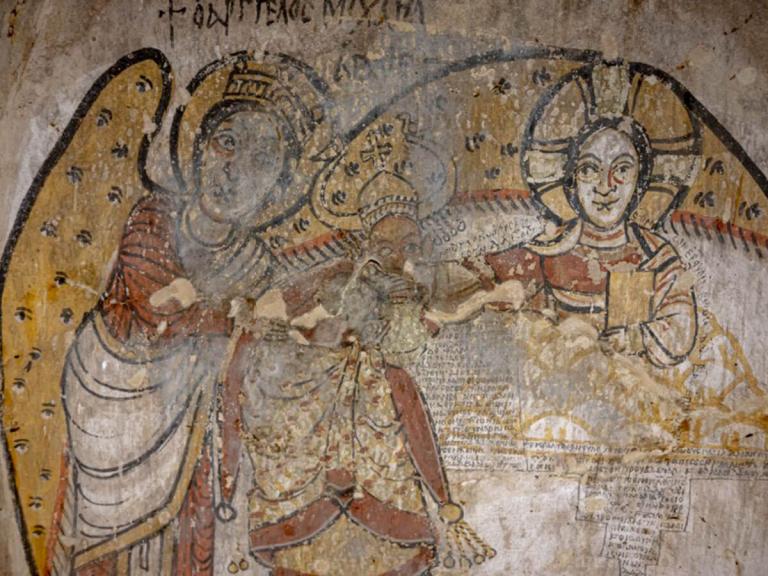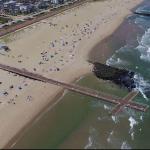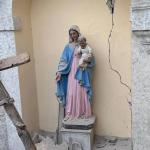
Archaeologists working in Old Dongola, a region in present-day northern Sudan, accidentally uncovered a secret room where they discovered unique medieval-style art. Old Dongola was once the capital of the Nubian kingdom, Makuria, and has been a region of significant archaeological finds. Summer of 2021, archaeologists uncovered the remains of what appears to be the largest Nubian cathedral in that region. An ancient temple dedicated to the God Amun-Ra was discovered last month, with the temple dating to be some 2,700 years old. Archaeologists Dr. Lorenzo de Lellis and Dr. Maciej Wyżgoł were exploring houses from the Funji period dating from the 16th to 19th century AD when they discovered the rooms beneath the floorboards of one of the houses.
The rooms contain unique medieval-style art. In one scene, a Nubian king is shown bowing to Christ, who is up in the clouds, and kissing his hand. The archangel Michael stands behind the king, supporting him and covering both Jesus and the king with his wings. On a wall opposite this depiction, Mary, the mother of God, is depicted in dark robes, holding a cross and a book. A statement about the discovery said the paintings were unique. “Such a scene finds no parallels in Nubian painting,” said the statement.
Several inscriptions accompanied the paintings, some of which were in ancient Greek and some which were in Old Nubian. Dr. Agata Deptuła from PCMA UW gave a preliminary reading of the Greek, determining that it was the Liturgy of the Presanctified Gifts. The Old Nubian was harder to decipher, but the team did uncover mentions of King David and a plea to God for protection of the city, most likely the Old Gondola. Experts believe the mention of King David means the king depicted in the painting is most likely King David himself, one of the last rulers of the Christian Nubian kingdom of Makuria. Experts speculate the prayer for protection could be for protection from Egypt, which attacked the city in 1276. “For reasons unknown, King David attacked Egypt, which retaliated by invading Nubia and, as a result, Dongola was sacked for the first time in its history,” experts said. Experts are hoping the inscriptions could give them more insight into why King David attacked Egypt first.
The rooms themselves where the paintings were found also interest the archaeologists. The space is small, resembling a crypt but is seven meters above the ground. The building where it was found is near a sacral building identified as the Great Church of Jesus. Arab sources have recorded that it was the Church of Jesus that instigated an attack on Egypt. Researchers focused on conserving the paintings with the intention of exploring the room further. “The paintings were detached from the walls in some places, but the painted layer itself was remarkably well preserved. Conservators secured the wall paintings, made protective bands and putties, and filled the empty spaces between the wall and the plaster with injection fluid,” said the statement. Archaeologists plan to return in the fall to see if the space is a royal commemorative complex.


